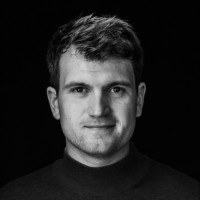The hidden story of agility
Agility is on everyone’s lips today and seems like a magic formula for success in product development and beyond. However, despite its widespread use, real success stories often fall short of expectations. To understand this contradiction, it is worth taking a look into the past, a journey to the beginnings of agility. This journey takes us to Silicon Valley, a place that not only became famous for the founding of technology giants such as Apple, but also went down in the annals of history for its links to aliens and secret CIA projects.
Skunk Works. Or: Developing a competitive aircraft in less than 180 days
A story of agile beginnings begins in the final days of the Second World War, when the Messerschmitt Me 262, the first jet-powered fighter aircraft, astonished the Allies. The technological superiority of this aircraft forced the Royal Air Force and the US Air Force to react immediately. The US government commissioned Lockheed to develop a competitive aircraft in less than 180 days.
Clarence “Kelly” Johnson was given responsibility for this ambitious project. In order to be able to work free of dependencies and legacy issues, he rented a circus tent smelling of camel dung, which stood next to a smelly plastic factory in Burbank, California. The tent reminded the employees of the “Skonk Works” from the comic strip “Li’l Abner” by Al Capp, in which a character called Big Barnsmell – the “Inside-Man at the Skonk Works” – works and “Skonk Oil” is produced by distilling dead skunks.¹ Although the official name was Advanced Development Projects, the internal name stuck internally and “Skonk Works” eventually became “Skunk Works”.
The collaboration was based on “Kelly’s Rules”, a collection of 14 principles that enabled fast, innovative and effective product development. Among other things, they addressed
- the work of small, committed teams,
- direct communication within the team members and with the customer,
- the need for strong, direct decision-making,
- the minimisation of reports and meetings and
- the freedom of the team to pursue unconventional solutions.
The principles also emphasised the importance of rapid prototyping and the team’s right to resist interference should it jeopardise their goals. Kelly’s approach was revolutionary and aimed to maximise creativity and efficiency by bypassing the usual obstacles of large organisations.
After only 143 days, the P-80 Shooting Star was completed. A resounding success.
Johnson’s unconventional approach laid the foundations for a series of ground-breaking projects that would change aviation technology and product development forever.
Espionage and counter-espionage: Or: A who’s who of tech founders
During the Cold War, in an era when espionage and counterintelligence dominated the global stage, technology continued to evolve in the direction of reconnaissance. Skunk Works once again took centre stage, this time with the development of the SR-71 Blackbird, a reconnaissance aircraft that redefined the limits of what was possible with its incredible speed and altitude. The test flights of these aircraft, carried out over the remote test site, also marked a turning point in the use of new technologies.
SR-71 Blackbird was capable of reaching speeds of Mach 3+ and flying at altitudes of over 85,000 feet (approx. 25 km), far beyond the range of most enemy air defence systems of its time. One of the outstanding technical features of the aircraft was its titanium alloy hull, which could withstand the extreme temperatures generated at these high speeds.
Due to the extreme flight conditions, the pilots had to wear space suits, similar to those worn by astronauts, to protect them from the high pressures and temperatures. These suits enabled the pilots to operate at high altitudes in the thin atmosphere. But to sensationalist onlookers, who were unfamiliar with spacesuits at the time, the pilots looked more like aliens stepping out of their spaceships. No wonder then that the test site, later known as Area 51, gave rise to so many myths and legends.
But as radar and missile developments challenged the superiority of aircraft, the US government, and Lockheed, turned to a new front of technology development: satellite reconnaissance.
This move again required an adaptation to completely new technologies and approaches. Millions in funding poured into the Harvard and Princeton labs, and eventually Frederick Terman, a pioneer in radio technology, moved his team from Harvard back to Stanford, where he established a unique collaboration between government and industry. On the government side was the CIA lab at Sandia, led by Jeff Bezos’ grandfather, while on the industry side was the advancement of Lockheed’s Skunk Works division, later known as Lockheed Martin Satellite Company (LMSC). This was necessary as it was now once again a question of using a completely new technology.
They worked together and set up a campus to bring together the most capable minds. One of these was Jacob Francis Wozniak, who moved to California with his young family to work at LMSC – the same Wozniak whose son would later found Apple.
The first significant project under this new approach was the “Discoverer 14”, also known as “Corona 90009”. It was not enough to put satellites into orbit; high-resolution images also had to be taken and sent back to Earth.
In the absence of digital technologies, analogue images had to be used. Together with Polaroid, lenses were developed that made it possible to capture images from orbit. These images were captured on film, which was packaged in capsules and ejected from the satellite and slowed down by jets. As the capsule approached the earth, it was slowed down by a parachute and caught in the air by a propeller-driven aeroplane with a gripper arm – similar to a slot machine. A manoeuvre hardly imaginable today, in which sometimes up to 10 aircraft were used to retrieve a single capsule.
Thousands of such images taken by the corona satellites provided valuable reconnaissance images, even if they arrived with a certain delay.
During this time, LMSC and the Radlab under Frederik Terman continued to develop and formulate their own principles, which became known as the “7 Rules of LMSC” and are mentioned in Walter Boyne’s book “Beyond the Horizon”. Unfortunately, Boyne did not reveal more details, so the exact meaning of these rules remains obscure.
Doing things a little differently
This period of close collaboration between university, government and industry not only produced groundbreaking technologies such as the first successful spy satellite, but also a new way of developing products.
The campus blossomed and attracted more and more people through its unique way of working together, making Lockheed the largest employer in Sunnyvale, California. This fruitful co-operation between Terman and LMSC resulted in numerous innovative projects. Among others, William Hewlett and David Packard, both former students of Terman, founded the company HP directly on that campus. Their success attracted other companies, including well-known names such as Epson, Brother, Canon and Xerox. This collection of pioneering companies and projects marked the birth of Silicon Valley. It established a reputation for doing things “a little differently” – a reputation that still characterises the innovative heart of this unique region today.
Among the researchers interested in new product development methods were Hirotaka Takeuchi and Ikujiro Nonaka. The two experts and founders of knowledge management wanted to investigate these innovative approaches in more detail and chose the companies on the campus, previously known as Stanford Industrial Park and later renamed Stanford Research Campus. Takeuchi and Nonaka collected their findings in their book “The Knowledge-Creating Company: How Japanese Companies Create the Dynamics of Innovation” and summarised them in a paper widely known in the agile community as “The New New Product Development Game”, published in the Harvard Business Review in January 1986.
The two authors compared traditional, sequential or “relay race” approaches to product development with a more integrated, flexible and rapid approach, which they called the “rugby” approach. In a rugby game, they argued, the entire team moves across the field as a unit, constantly adapting to achieve the goal, rather than passing the ball (or product) from one department to the next.
Key points of the article include:
- Overlapping phases
- Team dynamics
- Customer focus
- Iterative development
- Self-organising teams
Inspired by this article, two other pioneers, Jeff Sutherland and Ken Schwaber, adapted the techniques described in it for their own work. They formulated their findings and presented them as practically as possible. These two invented Scrum, a framework that they presented to the world at the OOPSLA conference in 1995.
The Agile Alliance
Many companies have tried to adopt Scrum techniques to build on the successes of Silicon Valley. But Scrum is not the only framework based on previous success stories. Other methods such as Extreme Programming and Crystal share many similarities with Scrum, as they have similar origins. Conflicts arose between the different approaches, so the protagonists of the various approaches decided to emphasise the similarities rather than the differences.
So it was that Ken Schwaber and Jeff Sutherland, along with fifteen representatives of Extreme Programming, Scrum, DSDM, Adaptive Software Development, Crystal, Feature-Driven Development, Pragmatic Programming and others, met at Snowbird Ski Resort in the Wasatch Mountains in Utah to discuss, ski and search for common ground.²
The result was the Manifesto for Agile Software Development, an alternative to documentation-heavy, cumbersome software development processes.
This gathering, which called itself “The Agile Alliance”, agreed to emphasise the importance of flexibility, teamwork and customer focus. Despite different opinions and backgrounds of the participants, there was agreement on the core values and principles based on trust, respect and the promotion of organisational models built on people and collaboration.
Examples of the successful application of agile techniques
Over time, agile techniques evolved, fuelled by certifications and the promise of doubling work performance. More and more organisations aspired to become agile and while not all have success stories to tell, there are impressive examples of the successful application of agile techniques:
- At John Deere, a transformation began in 2019 with the introduction of Scaled Agile Framework (SAFe), which continued in 2020 with Scrum at Scale. The realignment was certainly one of the reasons why the share price rose by over 400 %.
- Operation Warp Speed in the development of the mRNA-based COVID-19 vaccine. Under enormous pressure and with the use of new technologies, a globally sought-after product was developed in a very short space of time. In addition to the speed of vaccine development and production, what made Operation Warp Speed special was the comprehensive and unprecedented collaboration between government authorities, vaccine manufacturers and other partners.
- Tesla launched the Model S, an electric vehicle that became known not only for its long-distance capability but also for its ability to compete with sports cars. Although the price initially seemed high, it offered excellent value for money compared to traditional sports cars. The use of electric motors and battery technology greatly simplified vehicle design, reducing dependencies and complexities in the supply chain while significantly increasing profit margins. This puts traditional car manufacturers under considerable pressure to this day, as Tesla can dynamically adjust prices.
By the way: Tesla does not use a process model or framework such as SAFe or Scrum from A to Z. Tesla’s way of working is based on the flexible use of methods to identify and tackle weak points. For example, there is not a single Scrum Master in the entire company, which emphasises the focus on direct problem solving rather than formal processes. Something that I also learnt the hard way in one of my first projects.
Real investment in agility
In prototype construction in Stuttgart, I had the opportunity to lead a Scrum team. We adhered to the usual practices by running fortnightly sprints, holding regular retrospectives and daily stand-up meetings. Nevertheless, we realised that the situation was not improving.
The problem was not necessarily in our teamwork or the meetings themselves, but in the fact that our way of working did not correspond to reality. Although our sprints were scheduled for a fortnight, the development of a prototype part effectively took eight weeks – two weeks for coordination, sourcing, calculations and CAD models, followed by six weeks waiting for the supplier’s prototype.
This conclusion led to the realisation that we were actually working in an eight-week sprint cycle without realising it. It became clear that the main problem was the dependency on our supplier, which was causing delays. Instead of investing further in training, certifications, workshops and coaching, we should have renegotiated the terms of the contract with our supplier. Perhaps we could have achieved a better service level if we had been prepared to pay more, or perhaps we could have found another supplier who could deliver faster, even if it was more expensive.
Another option would have been to invest in our own 3D printer to make us less dependent on suppliers and expand our manufacturing capacity. This would have meant a real investment in more agility instead of sticking rigidly to certain frameworks such as Scrum, SAFe, LeSS or Spotify.
The good end of the story to conclude
With the hidden story of agility in mind, the advancement of various approaches, examples of the successful application of agile techniques and my personal experience, I would like to leave you with three final thoughts:
The essence of agility stems from the discovery phase of a product and not its delivery. This understanding underlines the need to carefully analyse the context in which a team operates and to select and adapt the appropriate framework accordingly. The uniqueness of each project, due to specific technological challenges and industry-specific requirements, makes it almost impossible to provide an all-encompassing solution with a single framework. Kelly Johnson could never have developed an mRNA vaccine in a smelly tent. And certainly with SAFe 6.0, the development of the P80 shooting star would have taken longer than 143 days. Agile methods provide a valuable framework, but their true strength lies in their flexibility and adaptability to the situation at hand.
Teams should not blindly rely on the guidelines of a framework, but use its principles as a guide to find their own way. Technology is developing rapidly and industries are facing constantly changing challenges. What was valid yesterday may already be outdated today. In this dynamic environment, it is crucial that teams quickly recognise obstacles and find innovative solutions that go beyond the boundaries of a framework.
Teams should also not be paralysed by the choice of a “right” framework. Instead, they should take a step back and focus on what really matters: sharpening their understanding of their specific challenges and developing an approach that allows them to learn about the customer and the market faster and collaborate better. The key is to develop a deep understanding of how technology and industry-specific requirements must shape the approach to achieve true agility and ensure sustainable success.
Notes:
Do you want to develop your company in a way that truly inspires users, customers and developers? Then simply network with Benjamin Igna on LinkedIn and find an approach that suits you and your context. Alternatively, you can also contact Stellar Work.
[1] Li’l Abner appeared as a comic strip in many newspapers in the USA from 1934 to 1977.
[2] The Snowbird meeting was prepared by earlier gatherings of lightweight methodology proponents and the discussions led to a new way of looking at software development, methodologies and organisational structures in a more agile way.
If you like the article or want to discuss it, please feel free to share it in your network.
Bibliography:
Beedle, M., van Bennekum, A., Cockburn, A., Cunningham, W., Fowler, M., Highsmith, J., . . . Thomas, D. (2001): https://agilemanifesto.org/.
Boyne, W. J. (1 December 1998). Beyond the Horizons: The Lockheed Story (Thomas Dunne Book S.). St Martin’s Press.
Harris, M. (2022). PALO ALTO – A history of California, Capitalism, and the world. Little, Brown and Company.
Nonaka, I., & Takeuchi, H. (2012). The organisation of knowledge: How Japanese companies are harnessing an untapped resource. Campus.
Rich, B. R., Janos, L., & Clancy, T. (1994). SKUNK WORKS. Little, Brown and Company.
Takeuchi, H., & Nonaka, I. (1986). The New New Product Development Game. Harvard Business Review.
Benjamin Igna has published two more posts on the t2informatik Blog:

Benjamin Igna
Benjamin Igna is a founder and consultant at Stellar Work GmbH. He has successfully led transformation projects and managed complex projects in the automotive and technology sectors, always with a focus on measurable results and operational efficiency. His expertise lies in aligning strategy and execution to drive sustainable organisational growth.
He also hosts the Stellar Work podcast, in which he profiles remarkable individuals who are redefining the boundaries of the product development process.

